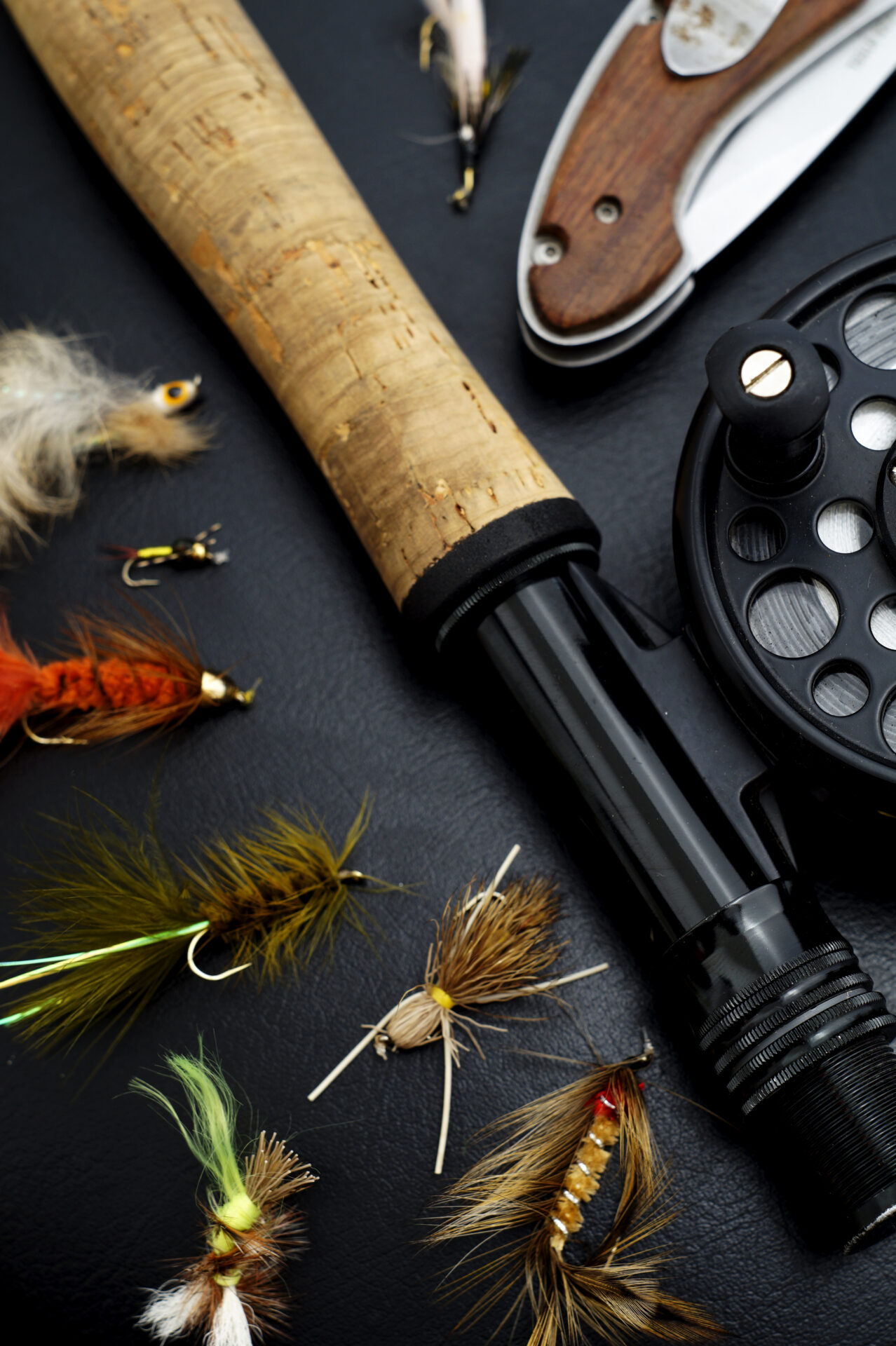Fishing for trout in tailwaters is a popular activity that can make for an enjoyable outdoor experience. Tailwaters are bodies of water created when a reservoir or a dam is built on a river, creating an area just downstream of the dam where the water is naturally cool and well oxygenated. This creates an ideal environment for trout fishing and can provide a great challenge for anglers of all levels. In this article, we’ll explore the best ways to go about fishing for trout in tailwaters, from selecting the right equipment to developing the right techniques for success.
Equipment & Bait Selection
Before selecting equipment and bait for trout fishing in tailwaters, it is important to know the type of trout that you are targeting. Tailwaters are typically stocked with rainbow, cutthroat, and brown trout, but the predominant species can vary from river to river. Understanding the type of trout in the water will help inform your equipment and bait selection.
Choosing the Right Tackle
When fishing for trout in tailwaters, the right tackle is essential in order to have a successful outing. Medium-weight spinning rods and reels are ideal for trout fishing in tailwaters. Consider using light- to medium-weight lines for best results when fishing for trout in tailwaters. For bait fishing, use traditional trout hooks in sizes 8-14.
Selecting the Right Bait
When selecting bait for trout fishing in tailwaters, the key is to choose bait that has a small profile and can be easily presented to the trout without causing too much disturbance. Traditional live bait such as worms, crickets, nightcrawlers, and maggots are all effective for trout fishing in tailwaters. Artificial baits such as spinners, crankbaits, and grubs also work well when targeting trout in tailwaters. Some anglers also find success with natural offerings such as grasshoppers and mealworms.
No matter what type of bait you choose, it is important to remember that trout in tailwaters are typically fussy and can be easily spooked. Over-fishing an area and using too large of bait can cause the trout to flee and will significantly decrease your chances of success.
Understanding Tailwater Fisheries
A tailwater fishery is a type of fishing that is conducted in rivers and streams that are located downstream of a reservoir or dam. These fisheries are known for supporting higher concentrations of trout, which serve as a desirable target species for anglers. Tailwater fisheries are generally at the mercy of the dam, as the rate and degree of water releases directly affect the aquatic environment.
Tailwater Water Flows and Fishing Conditions
The rate and degree of water releases directly affects fishing conditions in a tailwater fishery. When a dam is releasing water, it can create a large enough flow to make it difficult to cast a line and the fish become “cold-stunned” or inactive, making them difficult to catch. When a dam is releasing a smaller amount of water, or is not releasing any water at all, casting can be easier and the temperature of the water is more conducive to trout activity.
Identifying the Best Tailwater Fishing Conditions
Anglers interested in fishing in tailwaters should investigate the specific dam and irrigation requirements of the particular destination in order to identify the best fishing conditions. Doing so can make a big difference in terms of success.
Best Seasonal Times to Fish Tailwaters
The best time of year to fish tailwaters depends on the species that the angler is targeting, but seasonal times of year are generally accepted as being more productive than others. Spring and early summer are often the best times to target trout in tailwaters, as the warmer temperatures may cause trout activity to increase. In the fall and winter, trout may become sluggish due to colder water temperatures, making them less likely to take a bait.
Angling Tactics for Tailwater Fisheries
The key to catching fish in tailwaters is patience. Anglers should always bring a variety of lures or baits to try, and should be sure to vary their casting depths and locations in order to reach the fish. Fly fishing can be especially productive in tailwaters, as the slower currents provide the perfect conditions for presenting a fly to a trout. Additionally, spin fishing and bait fishing can also be effective if done properly.
Spotting Trout
Trout fishing in tailwaters is a rewarding experience, with unique opportunities to catch some of the finest trout in the world. The key to successful trout fishing lies in identifying and understanding the location of trout. Fortunately, tailwaters often provide fascinating clues that can help you find out where trout might be hiding.
Check the Water Temperature
The water temperature of tailwaters can directly affect the behavior of trout, making it necessary to take water temperature into consideration when trout fishing. Generally, trout tend to prefer cooler water temperatures, and can often be spotted in areas where the water is about fifty-two to sixty-two degrees Fahrenheit. However, some species of trout have been known to tolerate water temperatures as high as seventy-eight degrees Fahrenheit.
Look for Trout Hotspots
Tailwaters often contain areas of deep water, undercut banks, and submerged logs that are attractive to trout. Look for these hotspots, as they tend to be the most productive areas for trout fishing. Additionally, fishers often enjoy success near tailout areas, where the water is shallow and there is plenty of current to hide in.
Spotting Trout by Sight
One of the most reliable ways to spot trout in tailwaters is by using your eyes. Look for the flash of a tail breaking the surface of the water and the distinctive pattern of a trout’s body. Additionally, several species of trout can be easily identified by their color and size; for example, brown trout are usually larger than rainbow trout, and have a more distinct brown hue.
Employing the Use of Fine-Mesh Nets
When targeting trout in tailwaters, it is often beneficial to use a fine-mesh net to scoop up the trout. The use of a fine-mesh net eliminates the need for casting, and can be done quickly and accurately to capture trout. Furthermore, the use of a net can reduce the disturbance to the trout, allowing them to remain in the same spot without fleeing.
Preparing the Tackle
No matter what method you use to spot trout in tailwaters, preparation is key. Make sure that you have the right tackle, such as rods and reels, line, lures, and baits. Additionally, using the right type of tackle that is tailored for the specific species of trout you are targeting is essential.
Final Thoughts on Spotting Trout
Spotting trout in tailwaters can be rewarding and exciting. By taking water temperature into consideration, looking for hotspots, and scouting for trout by sight, you can increase your chances of a successful trout fishing trip. Additionally, always remember to prepare the necessary tackle and employ the use of a fine-mesh net to scoop up your catch.
Proper Techniques for Trout Fishing in Tailwaters
In tailwaters, there is often a variety of trout species, ranging from brown trout to brook trout, rainbow trout, and cutthroat trout. To stock your tailwater for optimum trout fishing, it is important to choose the right species of trout and size. Depending on the location, the trout should be stocked at a rate of 10-20 pounds per acre with a mixture of species.
Tailwater Trout Fishing Gear
When fishing in tailwaters, it is important to be prepared and have the right gear. Spinning rods and reels are often used for fishing in tailwaters because they are light, easy to use, and provide plenty of casting distance. You will also need to use a leader and tippet when trout fishing in tailwaters. For trout, a 4-6 lb. test line should generally be used. There are also a variety of lures, baits, and flies that you can use to target the trout in tailwaters.
Tailwater Trout Fishing Techniques
One of the most important techniques for trout fishing in tailwaters is to downsize your lures and other bait. Because of the colder waters, trout tend to be much less aggressive than in warmer waters, so your lures should be smaller. It is also important to use a slow retrieve when fishing in tailwaters as trout will usually strike slower moving bait.
Another technique for trout fishing in tailwaters is to use scented lures or bait. Trout will be more likely to strike if the lure or bait has a scent that the fish can detect. You can also use a variety of different casting techniques to reach specific points in the river or to cast out to deeper waters.
Location for Trout Fishing in Tailwaters
When fishing for trout in tailwaters, it is important to have a good sense of the environment, and know where the fish will likely be. Look for areas of current in the river, such as eddies or pockets, as the trout will often congregate in these areas. It is also important to look for structure, such as boulders and logs, as the trout will use these for shelter and as ambush points.
Fish Migration in Tailwaters
When fishing for trout in tailwaters, it is also important to consider the migration of the fish. Trout in tailwaters often migrate in search of food and will move to areas of the river with more food. As a result, it is important to keep an eye on the migration patterns of the trout and move to areas of the river where the fish are more likely to congregate.
Fishing Safety in Tailwaters
When fishing in tailwaters, it is also important to be aware of your safety and the safety of others. Make sure to wear a life jacket and waders when fishing, and be conscious of the changing water levels. It is also important to check the regulations of the river before fishing, as there are often restrictions on the use of boats and other gear.
Tips for Successful Trout Fishing in Tailwaters
Fish located in tailwaters are often larger than those found in other areas, making them sought after by many anglers. To catch trout in tailwaters, anglers should focus on fishing the deeper and slower-moving areas which are more likely to hold larger fish. Small lures and bait, such as inline spinners, midges, and scuds, are ideal for catching trout. When selecting a fishing spot, anglers should look for areas where the current is broken up by shallow pools, ledges, and eddies. These areas provide cover for the trout and make them more likely to grab onto a lure. Additionally, when fishing during the summer months, anglers should target the areas downstream of dams and channels. Trout often gather in these areas because they provide cooler water temperatures. Ultimately, by following these tips and carefully selecting the right fishing spots, anglers will have success fishing for trout in tailwaters.





Leave a reply